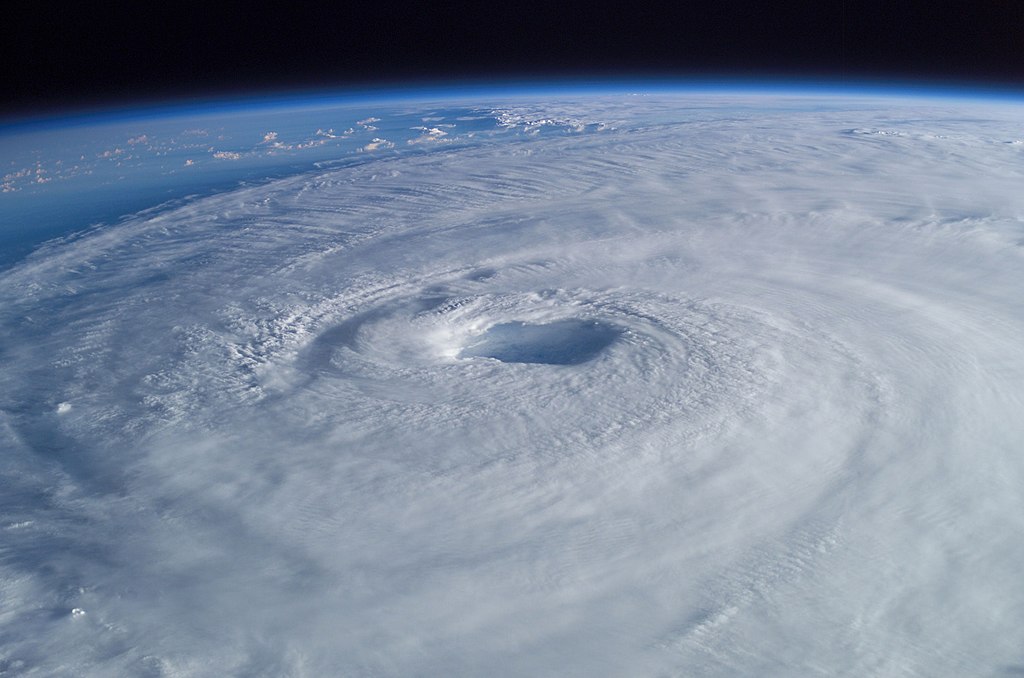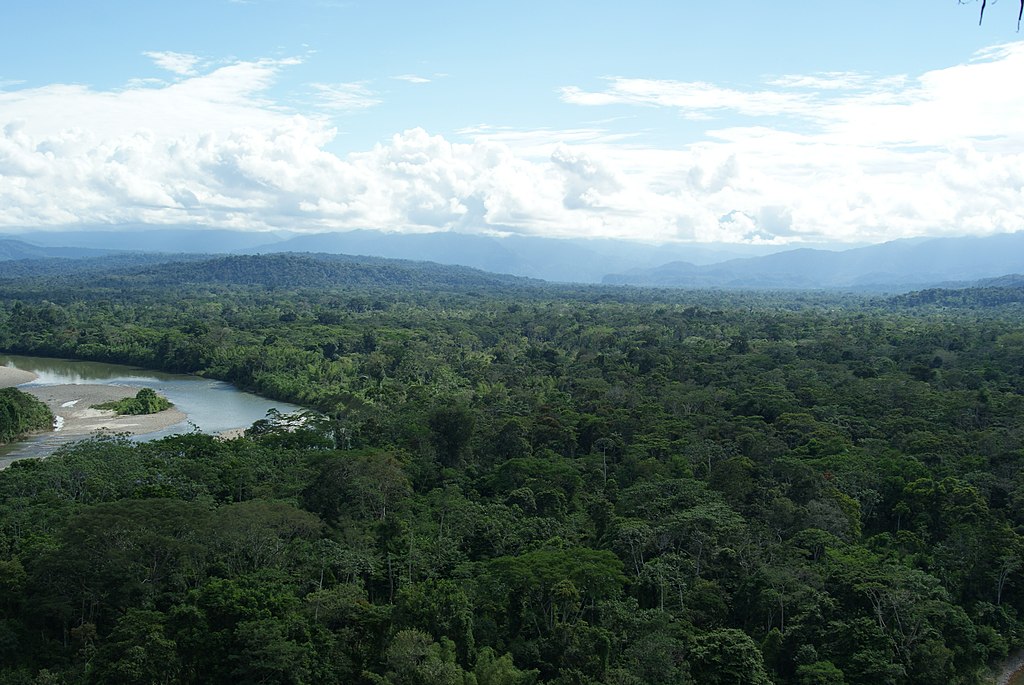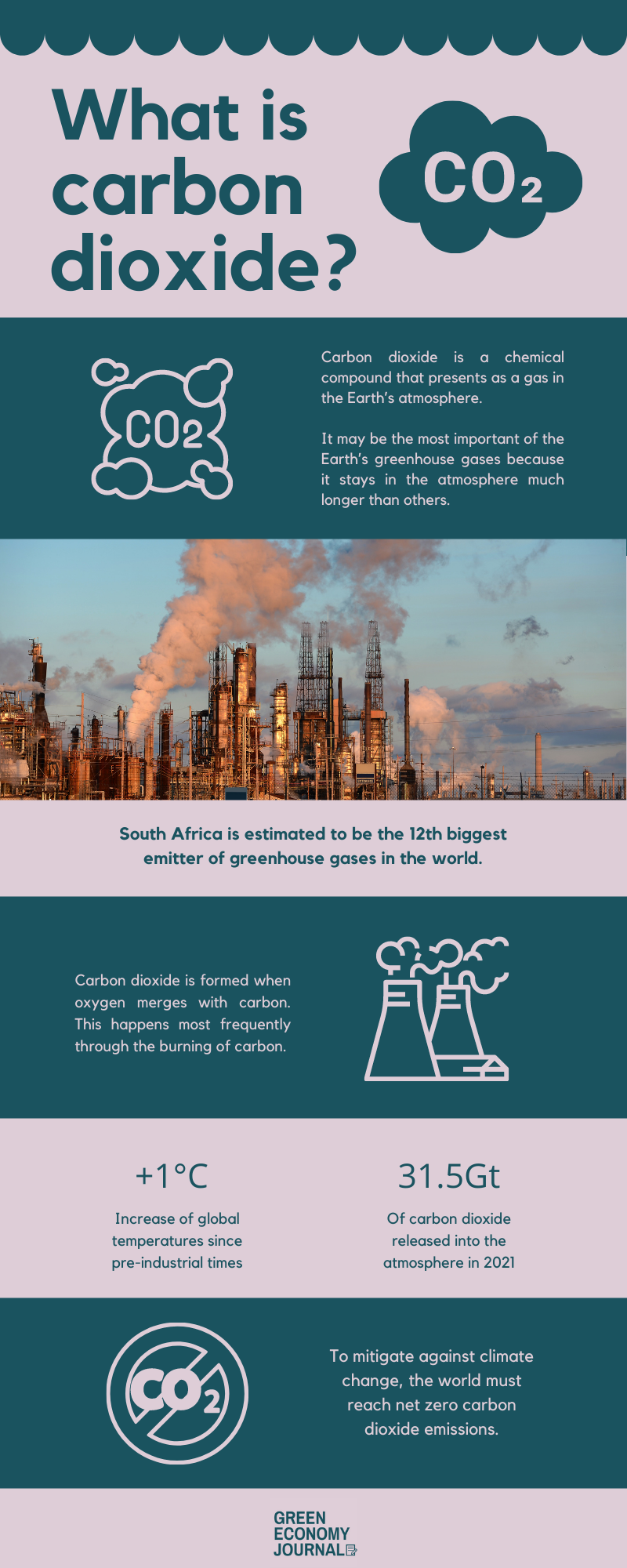Carbon dioxide: How increasing emissions are affecting life on Earth
Carbon dioxide (CO2) is a chemical compound that presents as a gas in the Earth’s atmosphere. It consists of one carbon atom and two oxygen atoms. At room temperature, it is a gas. It is naturally found in low concentrations in the atmosphere and is considered a greenhouse gas.
It can enter the atmosphere through natural or human activities. Animals and humans exhale carbon dioxide as a waste product through breathing. As for human activities, it is primarily produced through energy production, such as burning fossil fuels, like coal or natural gas.
Atmospheric carbon dioxide (CO2)
Carbon dioxide may be the most important of the Earth’s greenhouse gases. This is because it stays in the atmosphere much longer than greenhouse gases like methane or nitrous oxide. This means that the heat it traps inside the Earth’s atmosphere stays there for longer.
Greenhouse gases are gases that trap heat in the atmosphere. A greenhouse gas is any gas that absorbs infrared radiation and contributes to the Earth’s warming or the greenhouse effect.
South Africa is estimated to be the 12th biggest emitter of greenhouse gases in the world. At least two-fifths of these emissions come from Eskom, the country’s state-owned electricity supplier. But, with new emissions targets, South Africa will move away from its reliance on coal.
How carbon converts into carbon dioxide (CO2)
Carbon dioxide is formed when oxygen merges with carbon. This happens most frequently through the burning of carbon.
Sources of carbon dioxide
Carbon dioxide occurs naturally in the Earth’s atmosphere, although in much smaller quantities than nitrogen or oxygen. Plants absorb CO2 and convert it into oxygen through the process of photosynthesis. The ocean also recycles it. This is known as the carbon cycle.
Carbon dioxide can also be emitted through decaying organic matter. Some parts of the ocean emit the compound, while others absorb it, depending on the ocean’s temperature.
Effect on the ocean
CO2 can affect the pH balance of the ocean, meaning that it affects the acidity of the water. CO2 produces carbonic acid when it interacts with water molecules, lowering the ocean’s pH levels. Our oceans are at least 30 per cent more acidic than they were during the Industrial Revolution. An increase in acidity of this magnitude affects the ability of marine life to build their skeletons and shells using calcium from the water.
Volcanic eruptions also release CO2. However, the largest proportion of greenhouse gases spewed from volcanoes is water vapour. Volcanoes emit large amounts of greenhouse gases for a few hours during eruptions, but humans cause 60 times more carbon dioxide emissions than volcanoes each year.

How humans are affecting the carbon cycle
The carbon cycle has a careful balance. Carbon dioxide keeps the Earth warm, and without it, the Earth would be too frigid for life to exist. But, too much of it also causes the Earth to warm through the greenhouse effect.
The concentration of carbon dioxide in the atmosphere has risen from about 80 parts per million (ppm) since before the Industrial Revolution, to about 417 ppm now. The Industrial Revolution took place roughly 250 years ago. Due to this rise in the concentration of carbon dioxide, global temperatures have risen by about one per cent since pre-industrial times. To put this in perspective, the rise in carbon dioxide levels since pre-industrial times is more than what happened naturally over the 20,000 years leading up to the Industrial Revolution.
To avoid ever-worsening and extreme climate and weather events, global warming needs to be below 1.5 per cent (since pre-industrial times), according to the International Panel on Climate Change (IPCC). However, carbon dioxide levels are reaching record highs every year. In 2020, the amount of it in the atmosphere was as high as it was four million years ago when the Earth was 2°C to 4°C hotter. At the time, sea levels were 10 to 25 metres higher than they are now.
However, it is not the only greenhouse gas responsible for global warming. Methane-emitting fossil fuels, like natural gas, are just as problematic for the Earth’s atmosphere. Methane traps up to 86 times more heat over 20 years than carbon dioxide, increasing temperatures more quickly in the short term.
Carbon dioxide and human life
Carbon dioxide can be useful to humans, as it helps to keep the Earth warm enough for life to exist in appropriate concentrations. Plants also use it to produce carbohydrates through photosynthesis, and carbohydrates are important for peoples’ nutrition.
It is not especially harmful to humans either, unless absorbed in high quantities. At high enough levels, like in a closed room with poor ventilation, carbon dioxide levels can negatively impact someone’s ability to function. This is because it is an asphyxiant, affecting brain activity. These effects range from fatigue to headaches and loss of consciousness. Carbon dioxide poisoning can even lead to a coma or death.
How humans raise carbon dioxide levels in the atmosphere
About 31.5 gigatonnes of carbon dioxide were released into the atmosphere in 2021 (one gigatonne is equal to the weight of about 200 million elephants). This followed a slight slump in 2020 owing to the COVID-19 pandemic. Human beings are responsible for most of the rise in greenhouse gas emissions in the last 150 years.
The primary source of carbon dioxide emissions is the burning of fossil fuels, like coal and oil for energy. Coal is the fossil fuel with the highest carbon dioxide emissions. It is also released into the atmosphere through deforestation and land-use changes. The destruction of the Amazon forest shows how devastating deforestation can be for the climate. The Amazon, with an estimated 390 billion trees, stores roughly twice the amount of the compound emitted by the United Kingdom since 1750. Deforestation results in the release of the stored carbon dioxide into the atmosphere. Each year, the Amazon emits one billion tonnes more carbon dioxide than it can absorb, according to a new study.

Pathways to reduce CO2 in the atmosphere
Greenhouse gas emissions have increased to such a degree that global warming will increase until at least 2050, the Intergovernmental Panel on Climate says. Global warming will take place throughout the 21st century unless there are “deep reductions in carbon dioxide and other greenhouse gas emissions”.
This increase in global warming will lead to changes in the Earth’s climate systems. The consequences of this will be extreme temperatures, droughts, marine heatwaves, more intense tropical cyclones, and a reduction in Arctic sea ice and permafrost. More extreme events, like ice sheet collapse and abrupt ocean circulation changes are possible, the IPCC says.
To mitigate against these outcomes, the world must reach net zero carbon dioxide emissions. There should be aggressive reductions in methane emissions too, according to the IPCC. Net zero means that the greenhouse gases entering the atmosphere are balanced by the amount of greenhouse gases removed. An investment of about 1.5 per cent of global gross domestic product is required to move the entire world away from its reliance on fossil fuels to clean energy, according to experts.
In South Africa, Eskom aims to reach net-zero emissions by shutting down coal-fired plants and replacing them with renewables by 2050. To achieve this, no new oil and gas fields or coal mines should be approved by the government, as recommended by the IEA’s Net Zero report.

Related Articles
Poaching is not the only reason rhinos may go extinct
The ongoing effects of climate change may cause rhinos to go extinct unless adaptation measures are implemented, according to new research.
‘Climate change the biggest threat to health in the 21st century’
Experts say climate change is the biggest threat to health in the 21st century. In South Africa, many lives are already being lost to extreme weather.




